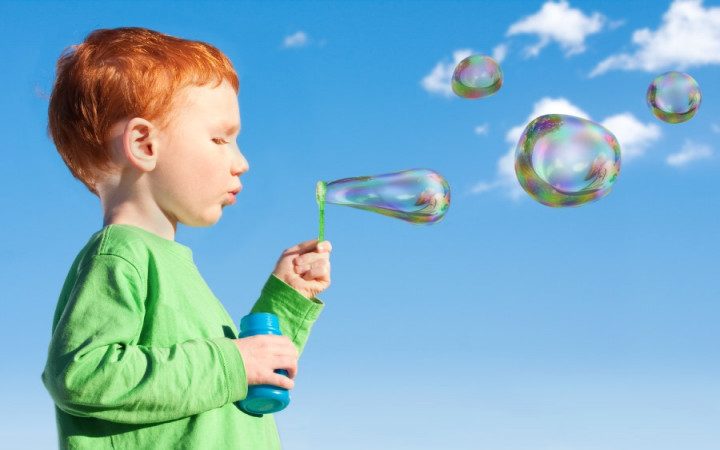Today’s Wonder of the Day was inspired by Matt from AL. Matt Wonders, “Why does water or glass reflect light into a rainbow?” Thanks for WONDERing with us, Matt!
Has someone ever told you that every cloud has a silver lining? Some days that might seem true, while other days just seem cloudy. If those clouds bring rain, though, you may look toward the skies and see something spectacular. What are we talking about? A rainbow, of course!
After a drenching rainstorm, the Sun will sometimes find its way through the clouds. When you step out into the humid air, smelling the fresh scent that often follows a storm, you may scan the horizon in search of those brilliant colors — red, orange, yellow, green, blue, indigo, and violet — that we call a rainbow.
Rainbows seem like a reward for suffering through those rainy days. But did you know that you can sometimes see rainbows on a bright, dry, sunny day? If you've ever blown bubbles in the backyard on a warm summer day, then you know that those tiny orbs that float around your head sometimes shimmer with the colors of the rainbow. Why do they do that?
To understand why you can often see the colors of the rainbow in bubbles, we need to look more closely at those bubbles. Just what are those bubbles made of anyway? If you guessed soap, then you're on the right track!
Bubbles look like little clear balloons filled with air, but they're not made out of latex like most balloons are. Instead, bubbles consist of extremely thin layers of soap and water. How thin? The walls of a soap bubble are mere millionths of an inch thick!
A bubble's walls are sort of like a sandwich. There's an ultra-thin layer of soap on the outside and the inside. These layers of soap surround an ultra-thin layer of water in the middle. When you blow on soapy water, the ultra-thin soap and water film traps air and holds it inside by surface tension. Bubbles form spheres, because that's the smallest stable structure they can take.
As loyal Wonder Friends already know, rainbows appear in the sky after it rains, because raindrops still high up in the atmosphere refract or bend sunlight like millions of tiny prisms. Sunlight is considered “white" light, or a mixture of all the wavelengths of visible light. When raindrops act like prisms and refract or bend sunlight, however, we are then able to see the different wavelengths (and thus colors) present in sunlight.
We see colors in bubbles for a different reason. When light waves hit bubbles, some of the light gets reflected back to your eyes from the outer surface of the bubble. Some of the light also gets reflected back to your eyes from the inner surface, which is mere millionths of an inch farther away.
These two sets of waves that travel back to your eyes interfere with each other. Some of the waves add together, making certain colors brighter. Other waves cancel each other out, removing certain colors. What's left when the light hits your eyes are the colors you see, known as interference colors.
You see different interference colors in bubbles (all the colors of the rainbow!), because the colors you see depend upon the thickness of the soap and water layers that make up the walls of the bubbles. Each individual color corresponds to a particular thickness. That's why bubbles can appear to change colors as they float around. As their walls contract and expand, their thickness changes, which results in changing interference colors.




